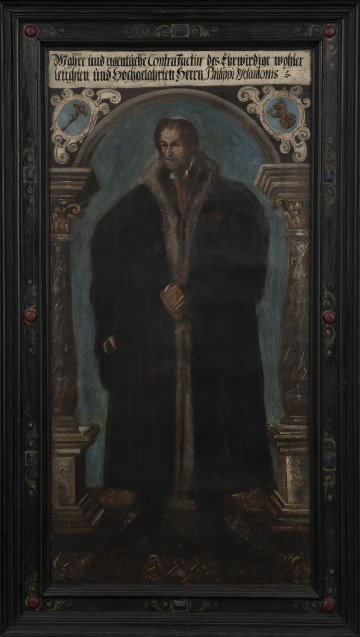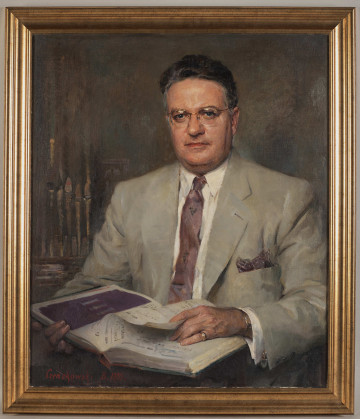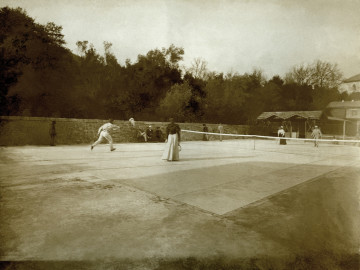
Portrait of Philip Melanchthon
circa 1560 — 1580
National Museum in Szczecin
Part of the collection: Graphics of German speaking countries
Heinrich Ehmsen's graphic was made in 1924 using the dry needle technique and etching and printed on thick velin paper. It belongs to the cycle So ist der Mensch (Such is Man). Ehmsen painted a revised watercolour version of this composition between 1932 and 1941, simplifying its background. The composition satirically depicts a bulky boxer flexing his muscles in the ring after winning the title of German boxing champion. The bird's eye view allowed the artist to show the entire scene from behind the upper rows of the audience. In the foreground, there are the caricatured deformed heads of several spectators. Below, in the ring, a confident, supernaturally sized, bulky boxer stands and looks around, expecting applause. A referee and losing opponents shown on a reduced scale are behind him. While bowing, they look awkward, overwhelmed by their defeat. In the background, the audience reacts in various ways - some are watching the scene with grimaces distorting their faces; others, excited by the event, are making violent gestures. In the background, a jazz orchestra is playing. The numerous stairs and landings leading in many directions allude to G. B. Piranesi's widely known Carceri (Prisons) engravings. They may symbolise man's imprisonment in contemporary mass culture. Heinrich Ehmsen was born in 1886 in Kiel and died in Berlin in 1964. He received a broad artistic education, first in Kiel as a decorator, then at the School of Arts and Crafts in Düsseldorf, and finally in Paris. He maintained contact with the most prominent representatives of the avant-garde of the early 20th century, including the Cubists Pablo Picasso and Georges Braque and the sculptor Ernesto de Fiori and the painter Maurice de Vlaminck. He worked in Munich and Berlin in the Expressionist milieu. He portrayed the life of the bourgeoisie after the First World War; in his prints and drawings, he eagerly took up the motif of boxers both because of the popularity of this sport and the possibility of raising existential problems. He was inspired by Maks Schmeling (1905-2005), the European boxing champion.
Ewa Gwiazdowska
Author / creator
Dimensions
cały obiekt: height: 400 mm, width: 300 mm
Object type
graphic
Creation time / dating
Creation / finding place
Identification number
Location / status

circa 1560 — 1580
National Museum in Szczecin

20th century, 2. połowa XX wieku
Castle Museum in Łańcut

Castle Museum in Łańcut
DISCOVER this TOPIC
Castle Museum in Łańcut
DISCOVER this PATH
Educational path